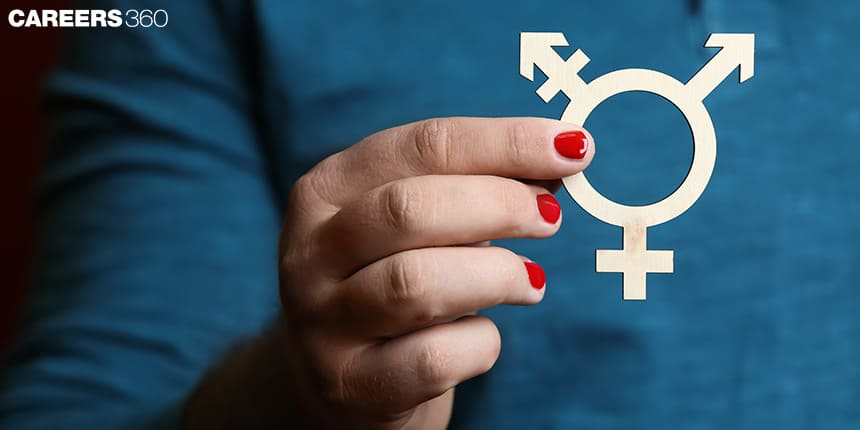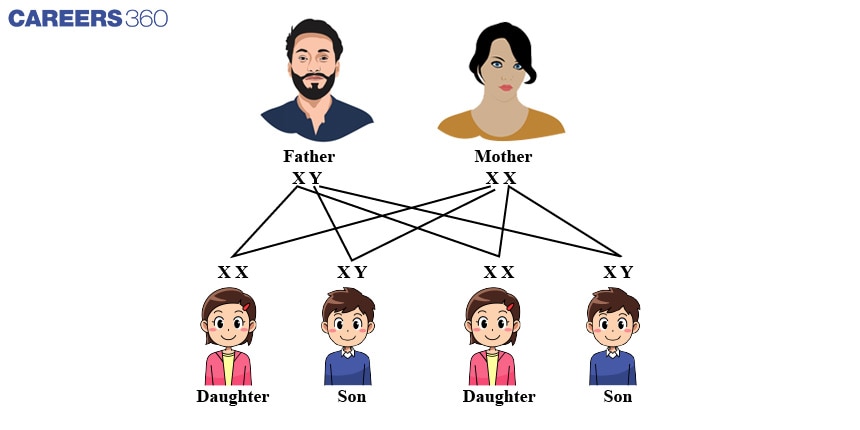Biology: There Is Science Behind Third Gender Identities
Today, the term "third sex" is more frequently used to describe groups like the muxes in Mexico and the hijras in South Asia, which are made up of transgender, intersex, castrated men, and cross-dressers. Some societies, such as the hijras, recognise genders in addition to "man" and "woman" and these are collectively referred to as third genders (and fourth genders, etc.). Societies that recognise four or more genders have a category (a gender) that is neither cis-male nor cis-female; frequently, these societies view trans men as the third gender and trans women as the fourth gender, or vice versa.
This Story also Contains
- How The Gender Of A Newborn Is Determined
- Chromosomal Disorders
- Mutation
- Gender Identity
- Hormonal Causes
- Transphobia And Prejudice

Although the fourth and fifth genders have been mentioned by some anthropologists and sociologists, the term "third" is typically taken to mean "other." Although hijras are frequently born male, they often have a traditionally feminine appearance and mannerisms.
The Supreme Court in a 2014 judgement said that the term "Third Gender" encompasses all transgender people. Here’s the biology behind it.
How The Gender Of A Newborn Is Determined

The sex of an individual human being is largely determined by genetics. In other words, whether an individual will be a boy or a girl is determined by the genes they inherit from their parents. Until now, it was assumed that both parents pass on the same gene sets to their children. If that's the case, how can sex be determined by genetic inheritance?
The reason is that human chromosomes are not all paired. A normal human cell contains 46 (23 pairs) chromosomes in total. Out of these, 22 pairs are identical in both males and females and are known as autosomes, while one pair of chromosomes is known as the sex chromosome. The sex chromosome is peculiar in that it is not always a perfect pair. A perfect pair of sex chromosomes is present in women, both called X. However, men have a mismatched pair where one is a standard-sized X and the other is a short one with the name Y. Therefore, women are XX and men are XY.
Whether they are boys or girls, all children receive an X chromosome from their mother. As a result, the children's sex will depend on what they receive from their fathers. A child who receives an X chromosome from their father will be a girl; if the child receives a Y chromosome, it will be a boy.
Chromosomal Disorders
Birth defects can result in babies being born with ambiguous genitalia, and there are many genetic disorders where sex chromosomes are either redundant or absent (for instance, XYY). Aneuploidy, or the gain or loss of a chromosome or chromosomes, is the result of chromatids failing to segregate during the cell division cycle. For instance, chromosome 21 gains an additional copy in foetuses with Down's Syndrome. Similar to this, Turner's Syndrome develops in female foetuses when an X chromosome is lost.
Klinefelter’s Syndrome
This genetic disorder is also brought on by an extra copy of the X chromosome, which results in a karyotype of 47, XXY. Such a person exhibits overall masculine development but also displays feminine development (breast development, or gynecomastia). Individuals with this condition are sterile.
Turner’s Syndrome
One of the X chromosomes, specifically 45 with X0, is missing, which leads to this disorder. These females lack secondary sexual characteristics and have primitive ovaries, which renders them sterile.
Mutation
The sex-determining gene Y (SRY) or testis-determining factor (TDF), is found on the Y chromosome. The development of the testis is largely governed by SRY. It is not the only gene; numerous proteins and pathways, some of which are found in the autosomal regions, are also involved in this process of sex differentiation.
An embryo with XY sex chromosomes can develop into a female by simply changing the amino acid methionine to isoleucine in the SRY gene. It is not hard to envision how such de novo mutations might also affect gender identity. Any mutation or alteration in an organism's genome that did not already exist or was not passed down from its parents is referred to as a de novo mutation.
Gender Identity
However, transsexuals have normal chromosomes and are biologically male or female but psychologically feel like they belong to the opposite sex.
Gender identity is the term used to describe how an individual perceives their own gender or the gender with which they identify. Transgender people may identify as heterosexual, homosexual, bisexual, or none of the above.
Everyone has a gender identity and a sexual orientation, but a person’s gender does not determine a person’s sexual orientation. Sexual orientation and gender identity are two distinct aspects of identity. Sexual orientation is the third factor that is connected to sex and gender.
Hormonal Causes
It's possible that the hormones that cause the development of sex and gender in the womb don't work properly. This could be due to the mother's system producing too many female hormones or the foetus's insensitivity to the hormones.
For instance, gender identity derived from the brain might be female, while anatomical sex from the genitalia might be male. The latter condition is called androgen insensitivity syndrome (AIS).
Transphobia And Prejudice
Neither the parents nor the members of the third gender are responsible in any way that they could control.
Much of the anti-trans propaganda is based on the belief that children can be "groomed" into becoming trans. In reality, all changes take place while a human embryo is developing in the womb of the mother. The primary causes are chromosomal disorders and hormonal imbalances; in short – biology.
Despite the historical acceptance of hijras, and the 2014 judgement by the Supreme Court of India that guarantees inclusion in education and employment, third gender communities in India continue to be highly marginalised. In the West, attempts at inclusion in schools and similar spaces have been bitterly opposed in some states.
